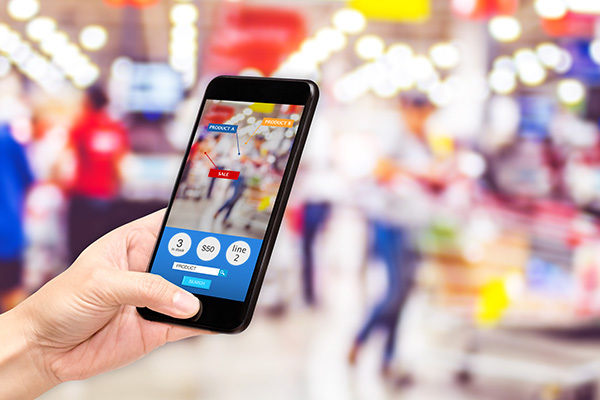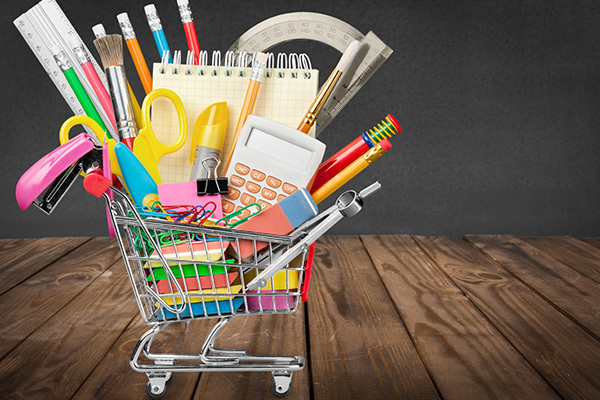

The beginning of the school year is quickly approaching (and may have started for some!), and the anticipation is starting to rise in parents and children alike. But due to the Coronavirus pandemic, going back to school is going to look much different this year. Some students will head back to the classroom full time, while many will continue to learn from the comfort of their home. Others will undergo a hybrid of at-home and in-person learning. Plans to return to school vary by country, state, and even by city.
This once exciting, and even anticipated (for school-loving people like me) time is now met with a lot of uncertainty. As marketers, we can play a role in helping teachers, students, and parents start this year with their best foot forward.


Since the pandemic started, mobile usage has increased 70% (Statista). Needless to say, mobile should be top of mind for marketers of all industries this back-to-school season.
For retailers selling school supplies and books, SMS and Push messaging can aid in creating contextual and holistic experiences for your customers. Drive mobile app downloads with discounts or special offers on back-to-school items for users who subscribe to your Push messaging. Try sending updates on inventory levels for popular products, or recommend trending content or products to ensure your audience is back-to-school ready. What’s more, you can use your consumers’ live location and historical data to send personalized, location-triggered messaging to drive in-store traffic.
There is no denying that COVID-19 has driven digital adoption, and a simple and meaningful mobile app experience is increasingly important. A great way to communicate with customers who are not opted-in to your Push notifications and enrich your user’s experience is through personalized and educational In-App messages. Perhaps you’ve changed your layout or restocked a popular product. Inform your audience as soon as they launch the app!
The value of mobile communications spans beyond your traditional industries. At the higher education level, it is imperative to openly communicate ongoing plans for the school year. With open rates running as high as 98% (Gartner), SMS is extremely effective when communicating time-sensitive messaging that teachers, students, parents, and alumni want to see. It was just over a year ago that I was a college student, only checking my email three or four times a week, usually before an 8:00am class to check if (or hope) it would be cancelled. Looking back, I applaud my university for using SMS to send reminders for events like registration deadlines and updates on campus activity such as power outages. For many students, including myself, that was the most effective and quickest way to be reached.


Today, many consumers continue to shy away from crowded public places and the need to offer simple and convenient online options for finding and purchasing school supplies is high.
Oftentimes, your customers already know what they are looking for when they come to your site. This is likely the case for seasonal back-to-school shopping. Personalization makes it so your site also knows what your customer is looking for as soon as they arrive. Artificial Intelligence (AI) and Machine Learning (ML) can aid in creating online experiences that are seamless, memorable, and highly relevant. Students’ needs will be different depending on how they actually “go back” to school – whether that’s virtually, in-person, or a hybrid of both. Findings have shown that “47% of consumers check Amazon if the brand they’re shopping with doesn’t provide product suggestions that are relevant” (SmarterHQ, Forbes). This means your site not only needs to have product recommendations, but the recommendations also need to be relevant to each individual visitor. Leverage real-time behavioral metrics (e.g., clicks, page views, carts, etc.) to deliver more relevant product recommendations and offers to drive conversions. AI-powered recommendations can display complimentary add-ons or items that other shoppers purchased, to increase average order value and improve the overall experience for your customers.
I previously stated the important role mobile marketing is playing in back-to-school. Again, it will aid in providing convenience and more holistic experiences for your customers. Many retailers are now offering touch-free shopping, contact-less delivery, and curbside pick-up to limit social interactions. Leveraging SMS to send pick-up / delivery instructions or order status updates is an effective way to engage customers with such time-sensitive information.


We’ve heard this many times over the course of the pandemic, but it continues to ring true: brands that will win in the current climate are those that put themselves in their customers’ shoes. Students, teachers, and parents are all still navigating uncharted waters, and creating truly meaningful experiences will build trust with your customers.
When messaging, consider the thoughts, fears, and buying considerations today’s customer is faced with. Be smart, be helpful, and be sensitive. You do not want to blast an email promoting returning to the classroom if there is a segment of your audience who will still be distance learning. Take another look at your planned initiatives, and make sure they still make sense for your target audience.
When executed properly, the tactics above can be very powerful in creating meaningful brand experiences that extend much further than just your back-to-school campaigns. It goes without saying that powerful personalization is not possible without accurate data. However, one of the largest concerns consumers have today is around how their data is being used and stored.
For instance, I’ve talked a lot about mobile marketing and how it can drive additional value for both brands and consumers. If you have a customer’s phone number because it is required at checkout, but do not have their explicit consent to receive text messages from you, then you should not be sending them. Consumers must first give their consent to opt in to a brand’s SMS (or Push) messages, a process that varies across global markets.
For many European marketers, getting consent to send SMS messages to a consumer is a one-step job (quite literally, most countries have a single opt-in process). Meaning, once users have submitted an opt-in form and received a confirmation, they become subscribers and do not need to confirm their opt in. In the United States, however, the process looks a bit different. The double-opt-in process requires that users reply to an opt-in text message, providing a digital record that a consumer has consented to being a part of an organization’s SMS program, which can be a barrier to entry for some consumers.
Embracing today’s strict compliance regulations can not only help your personalization efforts by acquiring accurate consumer data, but also (and more importantly) help you earn your consumer’s trust. At the end of the day, an individual’s rights to data privacy and opt-in and out options trump all. The long-short: Be clear on the data you will capture, how you plan to use it, and the value your customers receive in turn for providing it.
Learn how Marigold Engage helps clients meet the needs of their GDPR / CCPA compliance plans with our Consumer Information Management tool, which helps marketers easily manage privacy requests – from collection or removal of personal information to unsubscribing to communications – in just a few simple clicks.
Whether it’s in a virtual or physical setting, teachers and students will be resuming school this fall. And as this year has taught us, things can change at any moment. Therefore, marketers need the right tools in their stack to be agile and pivot plans when needed.
Creating truly helpful and relevant customer experiences will continue to be increasingly important as we adapt to our new normal. Brands that can deliver personalized, meaningful experiences both online and in-store (or on-campus) will not only stand out from the competition, but cultivate loyal, long-term customers and brand advocates.
Now that learning and work (and in many cases, school) increasingly happen in the privacy of the home, it’s more crucial than ever for digital marketers to reach consumers in their safe space. Download our new white paper, Digital Marketing and the New Concept of ‘Home’, for a range of strategies on delivering customer-first marketing and focusing your tech stack, to keep learning more about customers at every turn.
Marigold: where relationships take root.